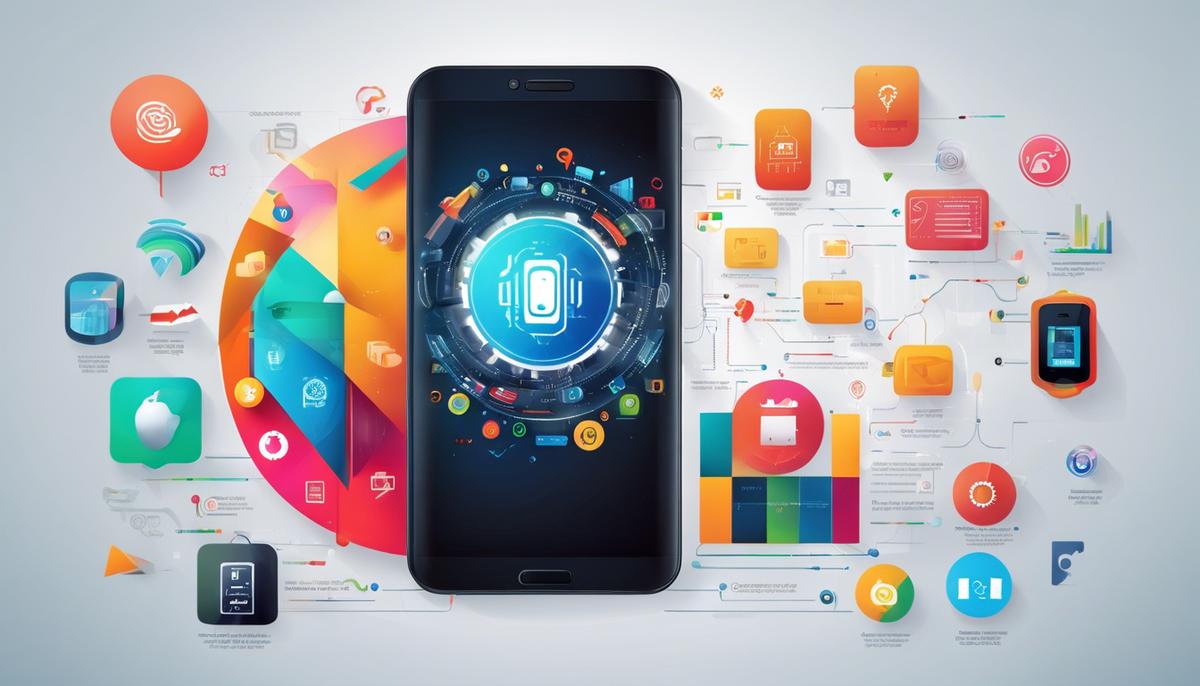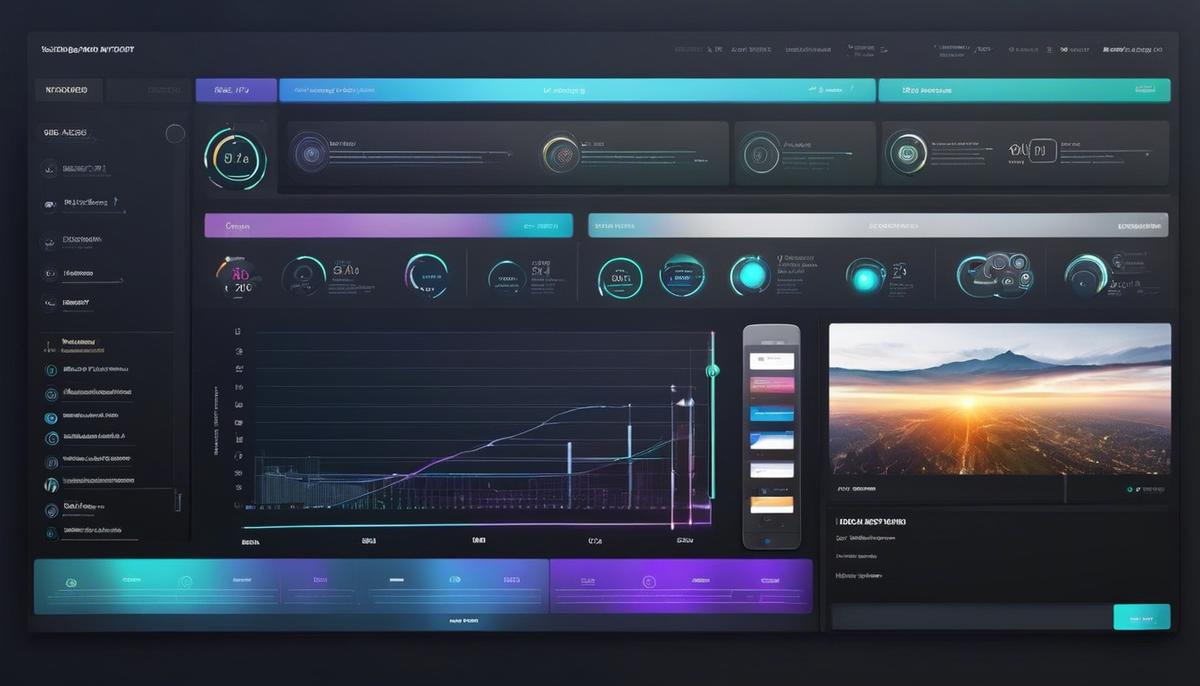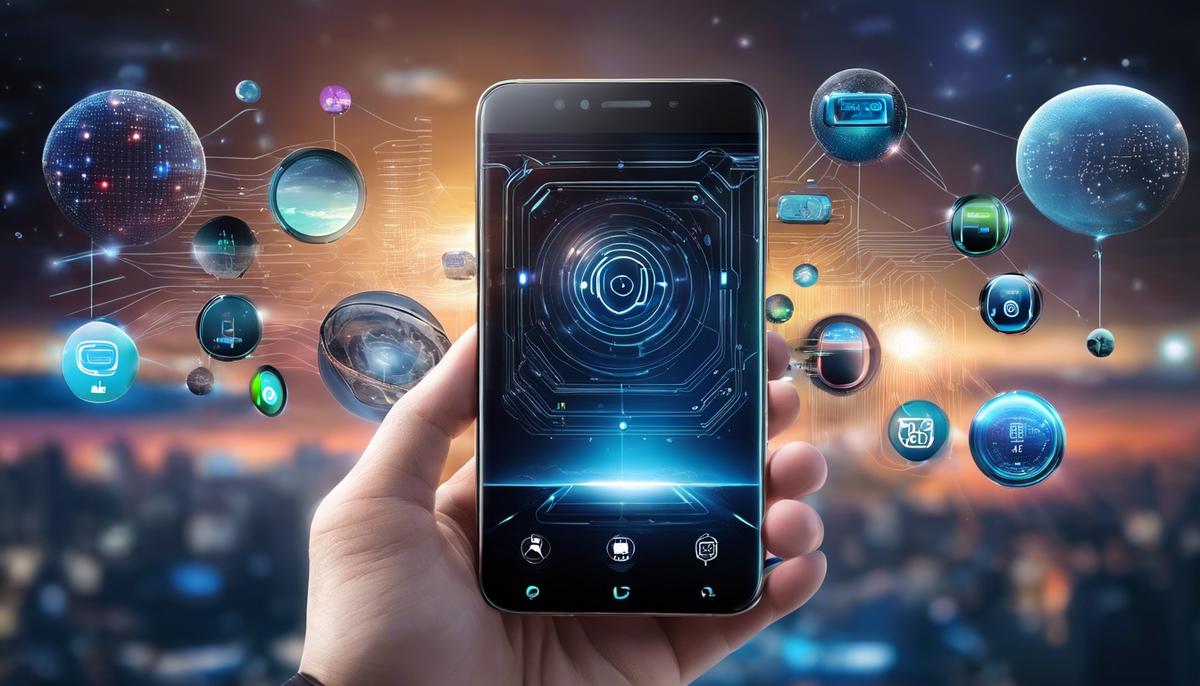As the frontier of technology perpetually marches forward, artificial intelligence (AI) has become an integral cornerstone in the evolution of smartphones, pushing the envelope of what we can achieve with the devices nestled in our pockets. This essay aims to unravel the complexities of AI performance and capabilities across the market’s leading-edge smartphones, delving into how these pocket-sized powerhouses harness AI to revolutionize camera functionalities, optimize battery life, sharpen speech recognition, and enhance the user interface experience. By dissecting the interplay between sophisticated chipsets, cutting-edge neural engines, and the practical application of machine learning, we prepare to uncover not only the current pinnacle of AI integration in smartphones but also the potential these advancements hold for the future.
Contents
- 1 AI Performance and Capabilities
- 2 Design and Hardware Integration
- 3 User Interface and AI Interactivity
- 4 Smartphone Ecosystems and AI Symbiosis
- 4.1 Bridging the Tech Ecosystem: AI Smartphones and Smart Device Symbiosis
- 4.2 Smart Home Automation: The AI Smartphone as A Command Center
- 4.3 The AI as a Digital Maestro in Entertainment Systems
- 4.4 Health Devices Synced for Holistic Wellbeing
- 4.5 Automotive Integration: The Smartphone as A Virtual Co-Pilot
- 4.6 The Workplace and Beyond: AI Smartphones as Efficiency Enhancers
- 5 Value and Price Analysis
AI Performance and Capabilities
AI Transforming the Smartphone Experience: A Closer Look at Recent Enhancements
Historically, smartphones have been bound by the limitations of manual input and static programming. However, the latest wave of artificial intelligence (AI) has catalyzed a significant leap forward in how these devices adapt to user behaviors, creating more personalized and efficient experiences.
Modern smartphones are embedded with AI-driven processors that enable machine learning right in the user’s hand. These AI enhancements manifest in several areas, radically altering the user interaction landscape. From intelligent photography adjustments to predictive text and voice assistants that understand context and nuances, these advancements are setting a new standard for what a smartphone can do.
AI’s most noticeable impact on smartphones can be seen in camera technology. The integration of advanced image recognition algorithms allows for real-time optimizations in focus, exposure, and color adjustments. Users capture professional-grade photographs without delving into complex settings, as the AI intuitively enhances images based on the subject and surrounding environment.
Beyond the camera, AI has revolutionized user interfaces through predictive typing features and app suggestions. Leveraging vast data sets and individual usage patterns, smartphones now anticipate the user’s next action, offering app recommendations, responses, and even scheduling reminders based on communication analysis. This kind of contextual awareness streamlines tasks, reducing the time spent on routine activities.
Voice assistants have also benefited from AI advancements. Gone are the days of robotic and misunderstood commands. Current voice assistants process natural language more effectively, delivering accurate responses and executing tasks with unprecedented efficiency. They can manage smart home devices, set complex reminders, and even engage in casual conversations, reflecting remarkable strides in AI language processing capabilities.
Another breakthrough has been AI’s role in power management. Smartphones now optimize battery life by learning user habits and adjusting resource allocation accordingly. This adaptive optimization keeps phones running longer, all while maintaining peak performance for the most critical tasks.
AI has also brought about real-time language translation, making global communication seamless. With the tap of a button, conversations can be translated on the fly, bridging language barriers and fostering connections across diverse cultures.
However, AI’s integration into smartphones extends beyond user convenience. Enhanced security features, through face recognition and unusual activity detection, provide robust safeguards for personal data. These smart security mechanisms adapt and evolve, staying one step ahead of potential threats.
Finally, AI has set the groundwork for increasingly versatile applications in health and wellness. With sensors tracking biometrics and AI algorithms analyzing this data, smartphones now serve as personal health advisors, prompting users towards healthier lifestyle choices and even alerting them to potential health concerns.
The implications of AI in smartphones are dynamic and multi-faceted. As AI technology continues to evolve, these devices will undoubtedly unlock new potentials, becoming ever more integral to daily life. With the trajectory set on a path of consistent innovation, the promise of AI in smartphones is not just about smarter technology, but about crafting a more intuitive, efficient, and connected human experience.

Design and Hardware Integration
Harnessing the Next Wave: How Design Meets AI for Smarter Devices
As smartphones integrate more advanced AI features, design innovation becomes not only a complementary force but a driving factor in how effectively these features are brought to life. The marriage of AI and design is essential in crafting devices that don’t just compute but intuitively mesh with the rhythms of human behavior.
When considering the synergy of AI and design, it’s not just about what’s under the hood, but how that power is harnessed and presented. Take display technology, for example. As AI-driven content curation becomes more sophisticated, adaptive displays kick in, providing users with personalized information at a glance. Ongoing design improvements, such as edge-to-edge screens and foldable displays, allow AI to unfold its potential in a visually expansive canvas, catering seamlessly to our voracious appetite for media consumption and multitasking.
Ergonomics, too, plays a critical role as AI amplifies device capabilities. Smartphones are morphing into shapes and sizes that allow for optimal interaction with AI features. For instance, AI-enabled fitness apps are now more intuitive due to compact designs that easily affix to clothing or skin, allowing for real-time health monitoring without intrusion into daily activities.
Another design leap comes in the form of Device-to-Everything (D2X) communication protocols, which enable smartphones to interact smoothly with a myriad of IoT devices. With AI’s predictive and adaptive learning, smartphones are turning into control hubs for our smart homes and connected lives. The design now emphasizes seamless integration, with minimalist interfaces fostering an almost telepathic interaction between devices.
Moreover, haptic feedback design has evolved as AI becomes capable of understanding and predicting user intent. Subtle vibrations and pressure-sensitive technologies enrich the way we receive information without diverting our attention, creating a multitiered sensory experience that goes beyond the visual.
Customizable aesthetics, meanwhile, have become a priority as well. With AI’s personalization algorithms, phones can adapt their themes and illumination in real-time to the user’s mood or the environment, a design choice that transcends functionality to tap into emotional resonance.
Battery design is no afterthought in this AI-driven landscape. As AI performs more complex tasks, energy efficiency is paramount. Batteries are now designed to be longer-lasting and faster-charging. They work in tandem with AI to optimize power usage for the most demanding applications, without the bulk that would impede the sleek, lightweight design preferred by users.
In conclusion, as AI continues to redefine what’s possible, design innovation ensures that these advancements are not only absorbed but accentuated in devices that feel like extensions of ourselves. The future, with AI and design in lockstep, holds promises of devices that anticipate needs, present information with breathtaking clarity, and integrate into our lives as naturally as a breeze on a warm day. The next wave of smart technology is here, and it’s not just smart – it’s beautifully intelligent.

User Interface and AI Interactivity
The Evolution of User Interfaces: AI Breaks Boundaries Beyond Imagination
Artificial Intelligence (AI) is not just a buzzword; it’s the linchpin that’s revolutionizing user interfaces (UIs) and user experiences (UX). As technology strides into the future, AI-driven features are not merely enhancing but, in many cases, completely reshaping how users interact with their devices.
AI in Real-time Accessibility Enhancements
One of the paramount ways AI is transforming interfaces is by making technology more accessible. Real-time adjustments to UIs based on user context, behavior, and environmental conditions embody the paragon of a personalized experience. For visually impaired users, AI algorithms dynamically alter text size and screen contrast, while those with motor impairments benefit from voice-controlled interfaces that learn and adapt to unique speech patterns.
Smart Predictive Inputs
Digging deeper into UI evolution, we unearth smart predictive inputs—a sophisticated leap from the convenience of predictive typing. Contemporary AI seamlessly predicts user actions within an interface, suggesting the next logical step in a workflow or navigation. This predictive power extends to anticipating future needs, preemptively loading relevant data and tools for an experience that feels almost telepathic.
Contextual Adaptation and Conversational Design
Contextual adaptation is the AI-enhanced UIs’ pièce de résistance. AI algorithms scrutinize the context of user interactions to deliver contextually appropriate responses and information—a monumental stride towards truly conversational design. This creates an interface that can hold a ‘dialogue’ with users, providing instant, relevant responses, much like a human counterpart.
Haptic Feedback: A Tactile Dance with AI
Haptic feedback, synchronized with AI, is pushing tactile interfaces to new pinnacles. Advanced vibrational patterns and touch-sensitive reactions offer users a multisensory experience that goes beyond the glass screen. Enhanced haptic feedback, informed by AI, can guide users through a UI, signal notifications, and even simulate physical buttons on flat touch surfaces.
Immersive Experiences with AR and AI
AI’s synergy with augmented reality (AR) is not to be overlooked. By coupling with AR, AI-enabled UIs craft immersive experiences through overlaid digital information on the physical world. These interfaces recognize surroundings and overlay digital controls or information, enriching the way users interact with both the digital and physical realms.
Algorithm-Driven Adaptability for All Screen Types
The ingenuity of AI-infused interfaces truly shines with algorithm-driven adaptability that transcends varying screen types and sizes. From the smallest smartwatch to the largest tablet, AI ensures that UI elements scale and organize effectively, maintaining usability and aesthetics. This adaptability empowers designers to create responsive and fluid interfaces that cater to a diverse range of devices.
The Nexus of AI and Emotional Intelligence in UIs
Lastly, the nexus of AI and emotional intelligence (EI) anchors a futuristic perspective of UIs. By interpreting user emotions through biometric data and behavior, AI-rich UIs deliver empathetic and genuinely human-responsive experiences. This confluence points towards a future of emotionally intelligent interfaces that not only understand commands but also the sentiments behind them.
In conclusion, AI features are not just embellishing user interfaces; they are the very essence of evolutionary change, driving interfaces towards being infinitely intuitive, empathic, and efficient. The possibilities edge on the limitless, portending a horizon where UIs and users become so seamlessly intertwined that they are indistinguishable from natural, organic interactions. As AI continues to push the limits of what can be achieved, users stand on the cusp of a new era of technological unity, where our devices cease to be mere tools and instead become intelligent companions in the dance of daily life.

Smartphone Ecosystems and AI Symbiosis
Bridging the Tech Ecosystem: AI Smartphones and Smart Device Symbiosis
As smart devices proliferate through homes and offices, AI smartphones stand at the helm of this technological renaissance, promising a level of integration previously consigned to the realms of science fiction. The real magic unfolds when these AI powerhouses begin to communicate with other smart devices, creating a seamless, interconnected experience.
Smart Home Automation: The AI Smartphone as A Command Center
Imagine walking into a room and the lights dimming to your preference, the thermostat adjusting to the perfect temperature, or your favorite playlist filling the space—all triggered by the presence of your AI smartphone. Modern AI smartphones, acting as command centers, can interlock with smart home ecosystems through IoT protocols. They utilize predictive algorithms to learn and adapt to user habits, thereby automating mundane tasks without manual input.
The AI as a Digital Maestro in Entertainment Systems
High-definition streaming and sophisticated sound systems now integrate effortlessly with AI smartphones. These smartphones, equipped with advanced processing capabilities, can optimize audio-visual settings, recommend content, and even anticipate the kind of media you might want to indulge in, offering a tailored entertainment experience. With compatibility protocols such as AirPlay and Chromecast, the AI smartphone acts as a digital maestro, orchestrating other devices to deliver personalized entertainment at a touch.
Health Devices Synced for Holistic Wellbeing
AI smartphones are increasingly central to health monitoring, not in isolation, but through synchronicity with other specialized devices. Smartwatches, fitness bands, and even intelligent mattresses communicate with smartphones to provide a comprehensive view of one’s health metrics. The AI integrates this data, offering insights, predictions, and recommendations to foster a proactive approach to health and wellness.
Automotive Integration: The Smartphone as A Virtual Co-Pilot
In the automotive sphere, AI smartphones are turning vehicles into connected hubs. With automotive manufacturers incorporating more AI into their designs, smartphones now serve as the virtual co-pilot, interfacing with navigation systems, adjusting in-car environments to personalized settings, and enhancing vehicular diagnostics. The synergy between vehicle AI and smartphone AI paves the way for a more intuitive and responsive driving experience.
The Workplace and Beyond: AI Smartphones as Efficiency Enhancers
In the workplace, AI smartphones seamlessly integrate with office equipment and environment controls, leading to increased efficiency and comfort. Calendar syncing with smart conference systems for seamless meeting setups, or networked printers responding to a print command right from the smartphone, encapsulates the workplace’s symbiotic future with AI smartphones at the core.
In conclusion, AI smartphones have transcended their role as mere communication devices, evolving into central hubs that bind various facets of modern life, from entertainment to health. Their ability to act as a nexus for a broad array of smart devices is not only convenient but also ushering in a new era of fluid technology, where the understanding and anticipation of human needs are met with a digital response that feels almost telepathically in sync. As the interconnectivity fabric continues to expand, AI smartphones are becoming indispensable orchestrators of our personal tech ecosystems, heralding a future where device collaboration is as natural as the devices themselves.

Value and Price Analysis
The allure of Quantum Computing in AI Smartphones: A Paradigm Shift or Mere Overkill?
In the grand scheme of consumer electronics, few leaps forward stir the imagination quite like the integration of quantum computing capabilities into smartphones. It’s a prospect that’s inching closer to reality, as whispers of tech juggernauts dabbling in quantum processing for mobile devices grow louder. But the looming question remains: are AI smartphones with quantum computing genuinely worth the investment?
Quantum computing, with its promise of exponential leaps in processing power, offers a tantalizing vision for AI-enhanced smartphones. Imagine devices capable of managing extraordinarily complex tasks, from real-time environmental modeling for augmented reality to sophisticated encryption and decryption for unparalleled security. The theory is compelling, but the practical implications require scrutiny.
Critics might argue that the existing smartphone AI enhancements, from camera precision to predictive interfacing, are already pushing the bounds of necessity. Do everyday users truly need the Herculean processing might of quantum chips for their daily social scrolls and business communications? It’s a valid skepticism, given most users are yet to harness even a fraction of their current device’s AI potential.
However, the prospect of quantum AI smartphones isn’t solely about the present; it thrusts a keen eye into the future. It’s about the preparedness for an era where devices interlace seamlessly with the fabric of urban living, where the “smart city” concept relies on split-second data processing for traffic management, infrastructure maintenance, and emergency response.
The investment in such future-ready technology could manifest as a leapfrogging strategy. For early adopters and tech visionaries, the quantum AI smartphone isn’t just a gadget—it represents a door to unprecedented capabilities such as complex simulations and analyses, even unlocking next-level advancements in personal health diagnostics.
Yet, affordability is a keystone in the discussion of worth. The hefty price tags that would undoubtedly accompany first-wave quantum-equipped AI smartphones could deter the average consumer, relegating these advanced devices to the realm of niche luxury or corporate utility—at least in their initial rollout.
Furthermore, the energy consideration is paramount. Quantum processing in a portable form would necessitate a revolutionary leap in battery technology—a leap that’s yet to be realized. Without long-lasting power units to support such devices, their convenience is called into question.
In conclusion, the verdict on whether AI smartphones with quantum capabilities warrant the investment is a complex one. It hovers at the intersection of present applicability and forward-thinking potential. Thrill-seekers of tech’s cutting edge may find ample reason to plunge headlong into this novel paradigm, while pragmatists might opt to observe from a cautious distance. What remains undeniable is that the technological landscape is teetering on the edge of this quantum precipice—a leap, should it come, that will redefine the role of the smartphone in the tapestry of daily life.

The quest for the ideal AI smartphone intertwines technology with the essence of human experience, reflecting a harmonious ballet of engineering and intuitive design. As we have traversed the realm of AI’s influence from the microcosmic intricacies of processors to the expansive synergy within smart ecosystems, it is evident that the value of an AI smartphone transcends its price tag, embedding itself into the fabric of our daily lives. By arming ourselves with the knowledge of how AI shapes our interactions, both with our devices and our environment, we stand poised to make informed decisions that resonate with our personal needs and the rhythm of the digital age. The best AI smartphone is not just a tool; it is a companion in our journey towards an interconnected, intelligent world.
